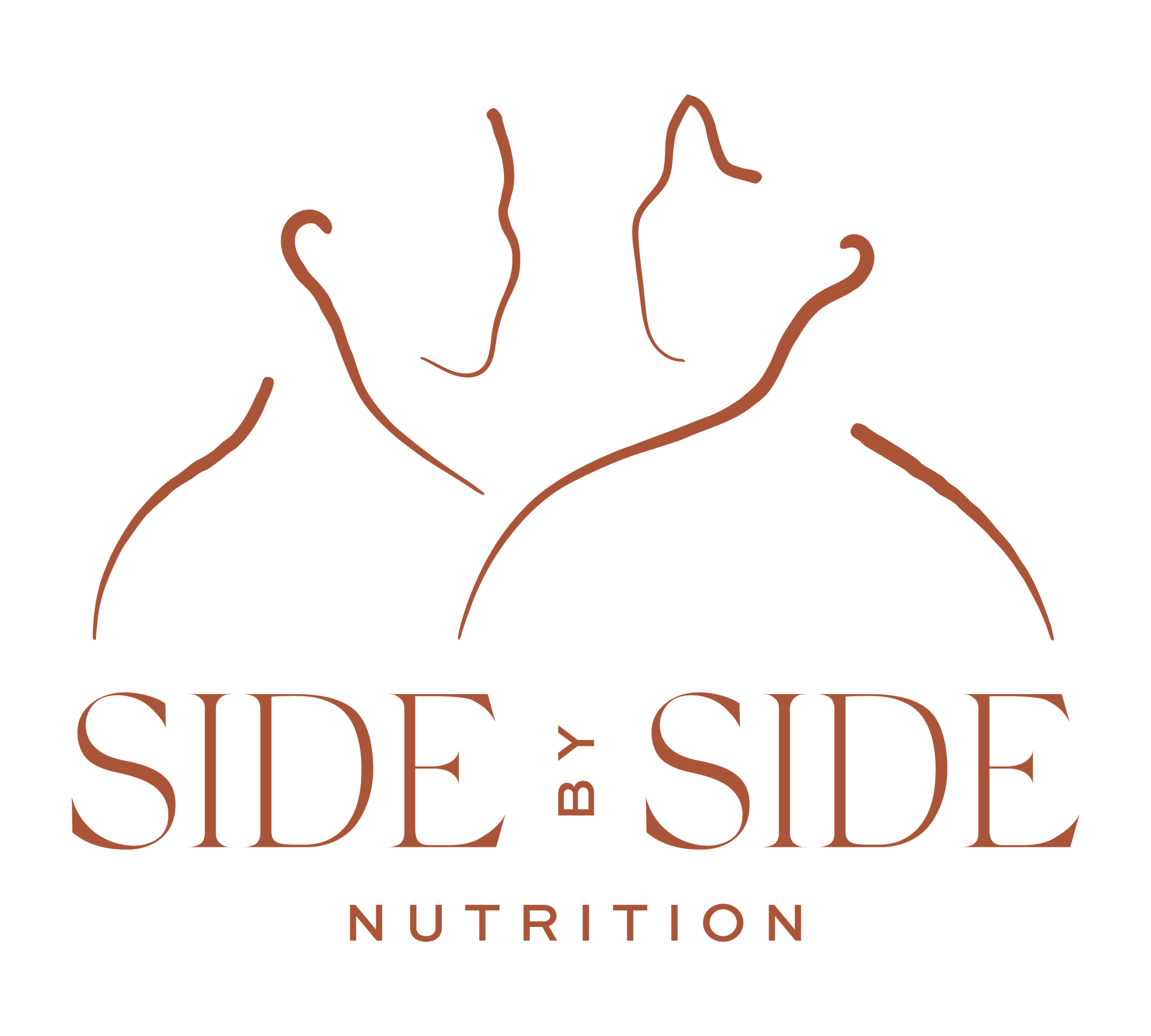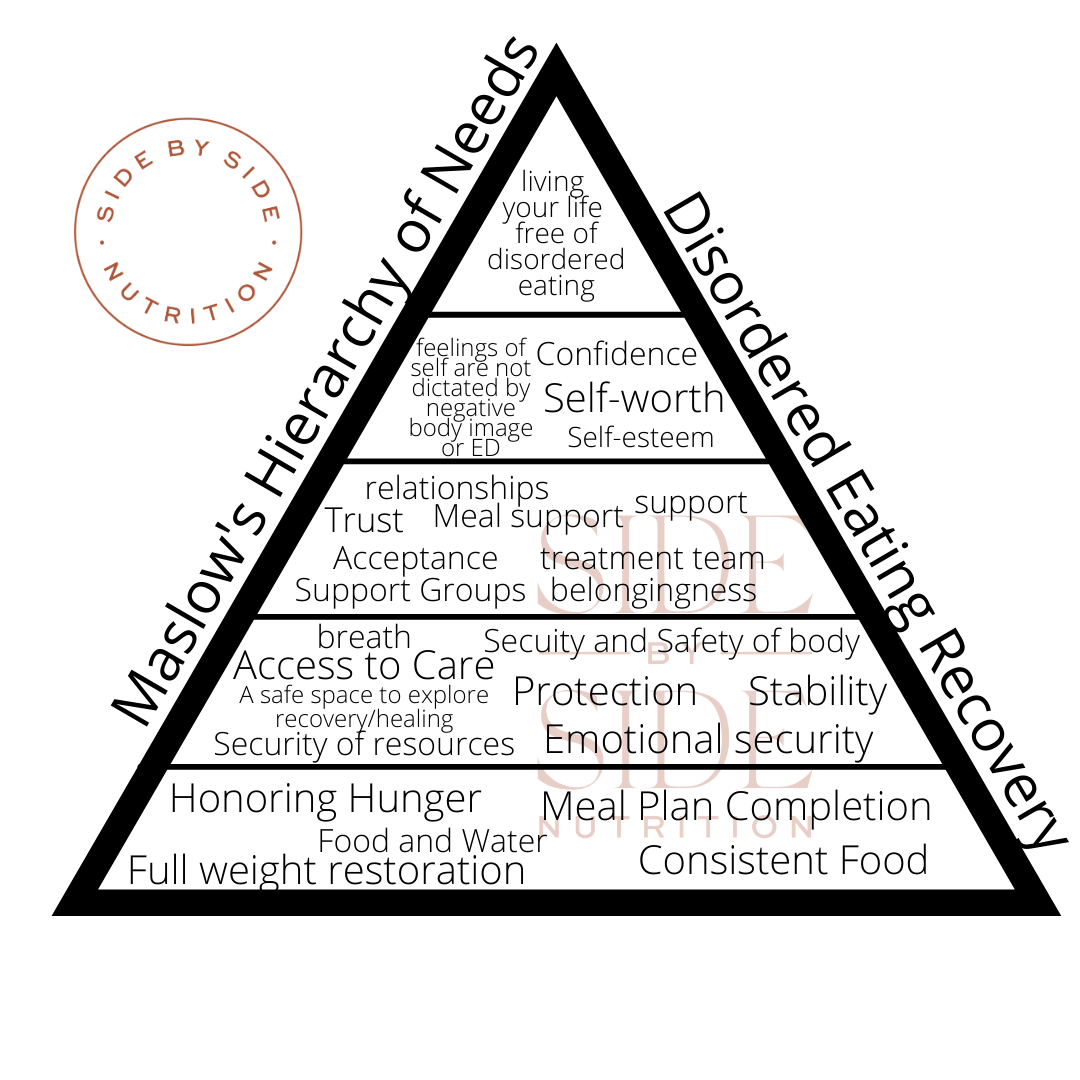Maslow's Hierarchy of Needs and Eating Disorder Recovery
Maslow’s Hierarchy of needs is a motivational theory in psychology that first showed up in the United states in 1943 and has remained popular in psychological analyses. The pyramid was created by a psychologist, Abraham Maslow, who has been looking for the meaning of life since the beginning of his career, looking to understand what would make life meaningful for people. He concluded that humans could be said to have 5 different kinds of needs that are broken up in two categories- the psychological or spiritual and the material. "In 1938, Abraham Maslow visited the Blackfoot (Siksika) Nation. There is evidence of Maslow’s work there with a link to an archival photo that places Maslow on the Blackfoot reserve at that time, and a link to more information on the Blackfoot people’s influence on Maslow."
Looking at the model from bottom up, we have the material needs represented by the first two tiers. Represented by the bottom tier, we all have the non-negotiable physiological basic needs - food, water, warmth, and rest. In the next tier, our urgent safety needs are represented. Then we start to enter the spiritual domain in the top tiers. These tiers are love and belonging in our relationships, followed by esteem, and then self actualization. The top tier of the pyramid- self actualization- describes the ability to reach our full potential and become who we really are.
This pyramid has become so popular because it is laid out in a way that was able to capture a profound truth about human existence. Maslow’s pyramid answers a lot of difficult questions including:
What are we really after?
What do we long for?
How do we arrange our priorities and attend to all of these different things we have on our attention?
We can not live solely with ONLY our spiritual OR our material needs. To be whole, we need both the material and the spiritual to live wholly, with the base offering support and the summit offering upward direction. To this day, Marlow’s pyramid informed by the Blackfoot Nation remains a useful tool to come to when determining the direction of our lives. With the complexity of our nature, people use this pyramid to reflect and notice how we are balancing these needs and to refocus and strive for a life lived in harmony.
Why is Maslow’s pyramid important for eating disorder recovery?
1. Physiological needs -. If these needs are not satisfied the human body cannot function optimally. Maslow considered physiological needs as the most important because as all the other needs become secondary until these needs are met.
Consistent and adequate food is needed In order to be able to do the healing, therapeutic work.
Honoring and allowing your body to be at its natural body size is required for your mind to explore the spiritual needs deeper.
2. Safety needs - Once an individual’s physiological needs are satisfied, the needs for security and safety (i.e. emotional security, financial security, law and order) are needed and can be fulfilled by the family and society (e.g. police, schools, medical care).
Individuals need safety in their journey- safety in their home and safety in their treatment team’s offices.
A much larger conversation but one that is always important to continue to raise awareness around- Eating disorders is a social justice issue. Helping our marginalized clients to recovery and reach self-actualization requires our providers to fight for the changes that allow our clients to live in a world that feels safe for these folx.
3. Love and belongingness needs - The need for interpersonal relationships like friendship, intimacy, trust, and acceptance motivates behavior
In recovery, this looks like receiving and giving support, love, and affirmation from those around you on your recovery. This can come from a family member, friend, treatment team member, and/or support group cheering you on throughout your journey.
4. Esteem needs - This is esteem for oneself (dignity, independence) and the desire for respect from others.
5. Self-actualization needs - the realization of a person's potential, self-fulfillment, seeking personal growth and peak experiences.
This is the ability to fully accept ourselves. This is our ability to be able to enjoy ourselves and live free of guilt. This is our life without an eating disorder.
How to apply this to your recovery:
Looking at Maslow's pyramid, reflect on how you are meeting your needs and how you are not meeting those needs.
Reflecting on the needs you are not meeting, what are the barriers to satisfying those needs?
Working with your treatment team, explore these ideas deeper.
Keep going.

